FROM AN ARRANGED MARRIAGE TO A GENUINE LOVE
- Joseph Polack
- Jul 25, 2020
- 8 min read
Updated: Jan 21, 2023
Among Yasuko's many passions was her growing love for a black Steinway and revisiting her nomadic family's secrets stored in a dozen albums she has kept at her magical Kamakura house: a two-story house with no stairs but filled with love and dormant memories.

Playing on the old family Steinway piano kept her husband Keitaro and their two adopted dogs Chris & Hugo happier during the second wave of the pandemic.

Each of her 3 boys, as she calls them affectionally, enjoy different classical pieces, so she frequently changes playing between Beethoven, Chopin, and several other composers.
The Steinway baby grand piano that her father used to play on during their life in the USA reminds Yasuko of her childhood years.
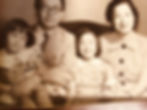
When, during one of my frequent pre-pandemic visits to their house in Kamakura-Hase, I asked Yasuko if her father Kunihiko was a composer or a concert pianist, she joked that he was a “nomadic mathematician“. After many years of our slowly growing friendship, I was invited for a journey into Yasuko & Keitaro’s pictographic past preserved in their family albums.
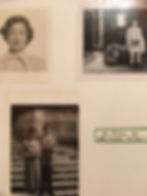
Because of her father’s job as an “ academic nomad ”, Yasuko, at the age of four together with her mother and a younger sister, left Japan to rejoin her dad in Princeton. From 1949, her dad, Kunihiko Kodaira, worked as Associate Professor at the Institute for Advanced Studies (IAS) at Princeton University.

When her mother took a photo of her father’s IAS colleague living in the neighborhood, Yasuko who had just entered Primary School, had no idea that the jolly man with a mass of uncombed gray hair was Albert Einstein.
From her earliest memories, her dad was on the way somewhere to teach something, that she could hardly comprehend.
When, after 18 years of his appointments at Princeton, Harvard, Johns Hopkins, and Stanford, her dad asked the family to pack all their belongings including his piano, and ship them to Tokyo, Yasuko welcomed her dad’s decision with mixed emotions.
She was going back to her country of birth, a country she hardly knew.

As her entire pre-university education was in the US, and her knowledge of Japanese language and culture was limited, she felt trapped.
She applied to the bi-lingual International Christian University (ICU). Yet, whenever she was away from her English-speaking ICU campus, she felt as if she were entering a cultural minefield.
Though she looked like any other Japanese student of her age, Yasuko kept committing embarrassing mistakes by daily breaking cultural taboos and social rules.
Experiencing a reverse cultural shock in readjusting to her own country brought her closer to people who lived between two or more cultures at the same time.
For a young ICU graduate it hardly mattered who-was-born-where as long as she could find common interests and share her emotions. Yet, there were times that her cultural struggles made her feel lonely.
Her concerned parents arranged for her to meet a young researcher. When Yasuko learned that he was a heart specialist, it sounded like a joke. At least until she discovered it wasn’t a joke, and she was actually dating a future heart surgeon.
But there was a lighter side to their courting as well: he didn’t care if she didn’t follow the Japanese etiquette of covering her mouth with her hand while laughing.
And sharing with him her opinions about anything and everything in a straightforward way rather than remaining respectfully silent during their first dates, brought even more fun.

His name was Keitaro and he was six years older than Yasuko. Since his years at Tokyo University's Mountaineering Club, Keitaro shared his passion for climbing with his research on the heart.
They both enjoyed the outdoors: while she preferred digging, he preferred climbing. And yet, he couldn't forget his three fellow medical students who had died during the winter climbing the Hodaka mountain range.
Their love for the outdoor life and those painful memories brought them closer together.
Though their first dates were arranged, they fell in love faster than their families expected:
At the age of 22 Yasuko Kodaira accepted a formal marriage proposal from the 29 year old medical researcher Keitaro Hashimoto.

One evening, many decades later in Kamakura, when Yasuko treated us to an after-dinner mini concert of my favorite Chopin, and Keitaro opened a second bottle of wine, I asked for permission to video record their recollections of the past.
They said I was welcome to record anything, including some of their joyful stories about their dating...
Keitaro couldn’t stop laughing when his wife of many decades, admitted in front of my daughter and the other dinner guests, that actually she married him for money.
Yasuko claimed that because of being educated in the USA, she naively believed that Japanese doctors made lots of money, only to realize that she actually ended up marrying a medical professor more interested in experimenting with new medications than making money.
She tried to keep her face straight, but after her husband’s outburst of happy laughter, she couldn’t restrain herself anymore. Then she followed it with another joke by joyfully apologizing: “Very sorry, Keitaro, I forgot to follow the proper etiquette of covering my mouth with my hand.”
And every time I was invited to their always hospitable home that was just a fifteen minutes walk from my writing studio, I was lucky to take a few more live recordings and see more family albums.

Their backgrounds seemed both similar and different: Keitaro became a vivid cross-cultural traveler much later than Yasuko.
And like her mother before, who followed her husband Kunihiko Kodaira's life of a nomadic academic, Yasuko was going to follow her nomadic-academic-husband Keitaro Hashimoto overseas, while taking care of their newly born son, Rentaro.
First to New York where Keitaro worked for two years on development of new medications, then to the University of Bonn where Keitaro continued his experimental research in pharmacology.

Then little boy Rentaro, like his mother Yasuko before him, was happily growing up in a frequently changing cross-cultural environment without even realising he was playing in different languages. Japanese was followed by English and German... Or in a reverse order.

At the nomadic Hashimoto family, the varying sounds of foreign languages were as a natural part of life as the changing sound of music frequently played at their home. While Keitaro’s English-speaking colleagues were mingling with the German and Austrian visiting academics, Yasuko enjoyed her musical encounters with Beethoven and Mozart. Living in the birth town of Beethoven, Bonn, and frequently driving across the landscape that used to inspire Mozart's music was going to affect the young Japanese couple's future social and family life. But they didn't know it then.
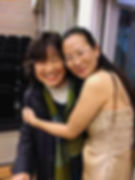
Yasuko and Keitaro weren't too surprised that many years later their daughter Yukiko became a professional musician and both Beethoven and Mozart would be among her favorite composers.
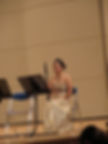
Or that their architect son Rentaro, would return to Europe to search for new architectural ideas.
For Yukiko and Rentaro, creativity wasn't restricted by cultural or state boundaries.

On the contrary, crossing cultural boundaries by introducing European composers to her Japanese students was as natural for Yukiko as it was for her brother fusing Japanese and European cultural elements into his overseas projects. Both children's taste for art rather than science didn't seem to follow their ancestors traditions: their father Keitaro was a fourth generation physician educated at Tokyo University. And yet in his early academic carrier, Keitaro followed a similar path to his late father-in-law‘s by taking his family along on his overseas research appointments. Yasuko’s dad, Kunihiko Kodaira, was just a 39 year old scholar when he was awarded as the first Japanese ever the prestigious Fields Medal (that is often called a “Nobel Prize in Mathematics”).

And like Kunihiko, Keitaro was returning from his overseas academic appointments to serve his native Japan as a university professor... and a volunteer physician at Mt. Fuji.

Between his lifesaving volunteering together with his wife Yasuko at Mt. Fuji’s First Aid Station at 3.100 meters altitude, Keitaro was keeping up with his overseas nomadism first as a Japanese representative at the International Association of Cardiologists, and then at the International Association of Pharmacology.
With the passing of time, the quick changes of clothes from formal functions and ceremonies to mountaineering and beach cleaning outfits have become routine for the nomadic Hashimotos.

They felt comfortable with themselves and their clothes were just an additional expression of their evolving lifestyle. As always, Yasuko continued to be close beside Keitaro whether her husband was heading to the Japanese mountains or to overseas conferences somewhere in the world. She joked, that while her husband was busy delivering his academic papers or formal addresses, she could join the other academics’ wives and have fun seeing cultural world treasures at the expense of her Mt. Fuji teammate, Keitaro. Keitaro & Yasuko’s frequent overseas journeys were as steadily broadening their cross-cultural network of friends as much as their incidental encounters with foreigners passing through Kamakura, who continued to keep them busy in many unexpected ways.

Sometimes the foreigners’ request for advice in English concerned a suffering pet, or a minor beach injury, or a painful sting by the jellyfish that infest our Kamakura bay during the summer season; other times, the heart trouble of a European long-distance ocean swimmer, or a suspected brain-stroke of an elderly Asian neighbor. Some resident foreigners had health insurance, some had not. Watching Keitaro from my beach chair was both an uplifting and humbling experience. Whenever he was asked for his medical advice, he would interrupt his daily beach cleaning and let his black poodle Chris wait. It seemed that even the recently adopted white poodle Hugo has already learned of his 79 year old master's double role: a beach-cleaning-physician. Yasuko and Keitaro were preparing to celebrate their 50th (!) Wedding Anniversary with their multicultural friends this spring, when the coronavirus struck. Due to social distancing their anniversary party had to be cancelled, but Keitaro continued his job as a frontline physician at our local Kamakura hospital, while Yasuko continued to work from home as his social aid. Though the resident foreigners troubled by Covid-like-symptoms or falling ill for a variety of reasons couldn't catch up with the Hashimotos on the beach as frequently as they used to, many of us kept asking for their advice by calling their home number. And when recently, one of our Southeast Asian neighbours' face was suddenly paralyzed one morning, a single call to Yasuko generated an immediate chain of help. Keitaro activated his broad network of medical friends and in no time at all the foreigner was examined by a world-class Japanese neurologist who incidentally lives along our Shonan coast. When the quarantine rules were eased, and I could revisit the Hashimoto house in Kamakura-Hase, neither of them mentioned this case, nor any of the other cases of their volunteering aid for our foreign community. Instead of dwelling on the latest troubles brought by the pandemic, Yasuko & Keitaro took me on a cheerful journey into their family past. The secrets were mixed with anecdotes and a delicious meal Yasuko prepared. As always, I was allowed to shoot my documentary videos and ask freely about the people depicted in their family albums. One of the younger faces reminded me of a face I used to see frequently in the global media. We looked at their faded wedding photos over sparkling wine and a watermelon I had brought as gifts from my daughter's Fujisawa family.

In the formal wedding photo taken a half-century earlier, young Yasuko and Keitaro are surrounded by four rows of their respective Kodaira and Hashimoto clans.
And nobody had even imagined then, that the bride and the groom would become Kamakura beach cleaners, rescue volunteers, and the adoptive parents of two abandoned dogs, Chris and Hugo.
A few months before the outbreak of the pandemic, my youngest granddaughter, Sara, had, together with her mother, visited the Hashimotos magical house that was designed by their son Rentaro.
I recalled Yasuko playing classical German pieces on her late father’s Steinway, then switching to Japanese children songs that she performed as a duet with my singer daughter.
That my daughter was born in Sweden, and her daughter in Japan, while my son’s daughter was born in the USA, and I in Poland, was hardly anything particular for the nomadic Hashimotos. Interacting with multi-culturals in their native Japan or overseas didn't seem to make any difference for them.
Though Keitaro and Yasuko are not going to do their annual volunteering near the closed Mt. Fuji's summit this year, they will surely keep busy in our multicultural Shonan-Kamakura neighborhood:
Yasuko picking up pieces of glass hidden in the sand, and her Keitaro picking up his daily beach rubbish between his regular hospital work.

Two weeks ago, passing by the Hashimotos Kamakura House, I could hear Chopin. Yasuko was playing on her late father’s Steinway a nomadic Polish composer who was born just 70 km away from my ancestral village in the Mazovian Lowlands. Though his mother was Polish, and his father, French, Chopin's music has always sounded Polish to me. The familiar music magically revived dormant memories of my childhood; a childhood on the other side of our Eurasian continent.

Lifestyle along our multi-ethnic Shonan coast has been slowly evolving and adjusting to the ongoing online and offline changes.
Some people are busy looking for the more durable face masks and the latest zooming software to escape the pandemic.
Other keep smiling under our fading masks while watching the sunset of sacred Mt. Fuji reflected in the ocean.
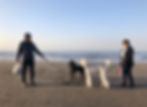
And occasionally, some of us may be lucky enough to notice a senior couple walking their dogs along the bay holding hands as they used to do fifty years earlier when their arranged marriage evolved into a genuine love.